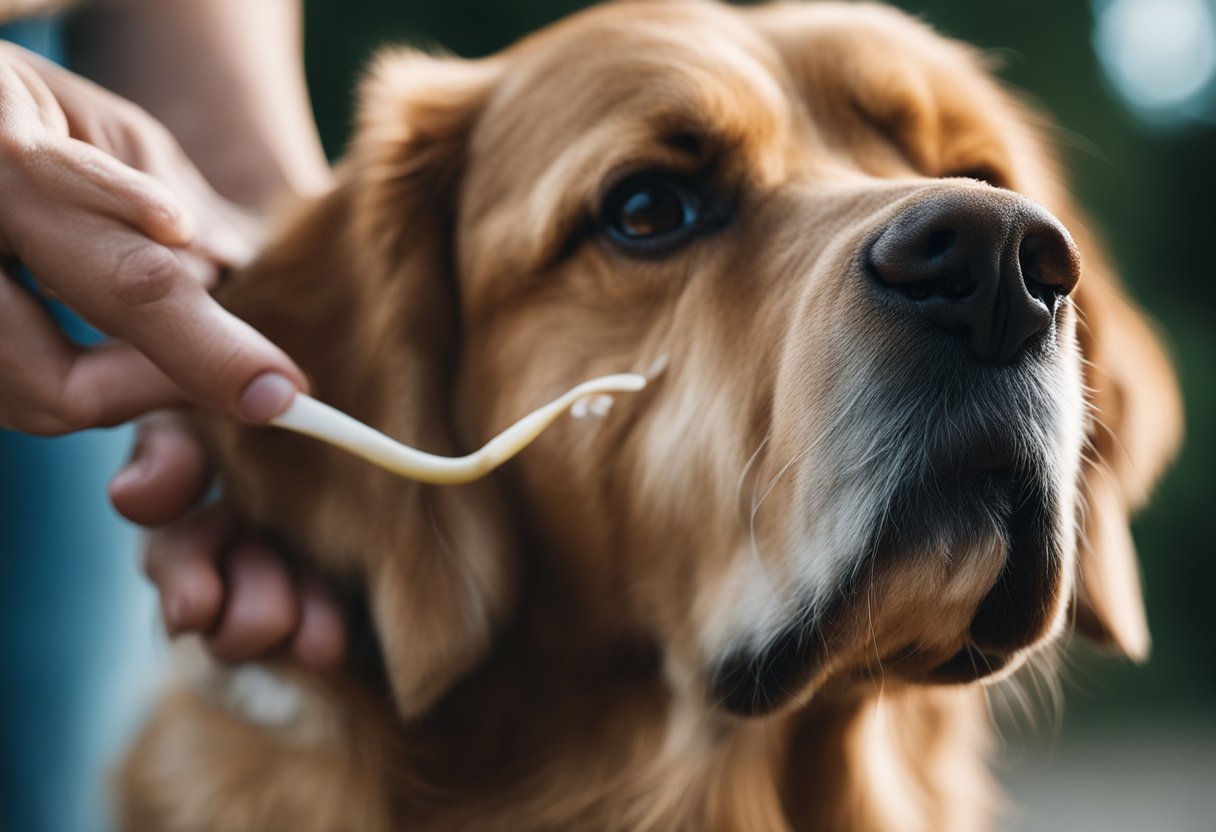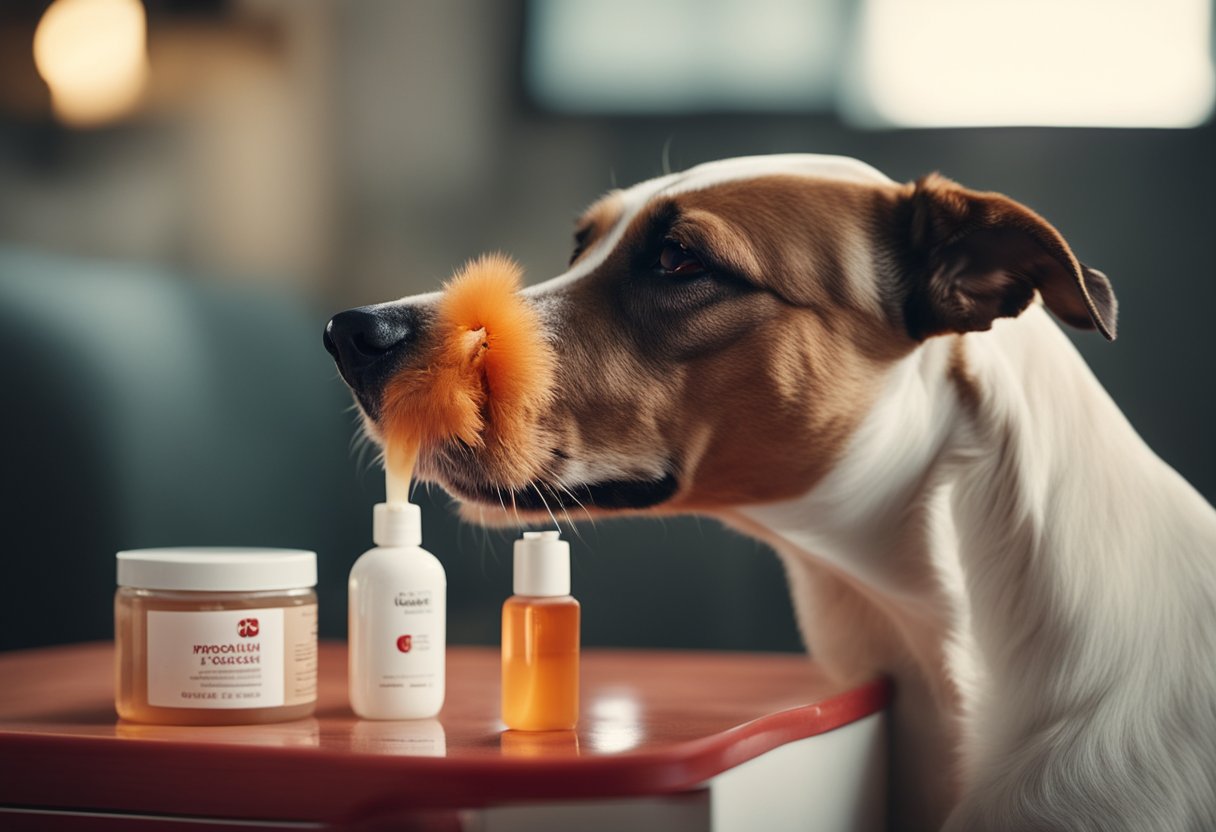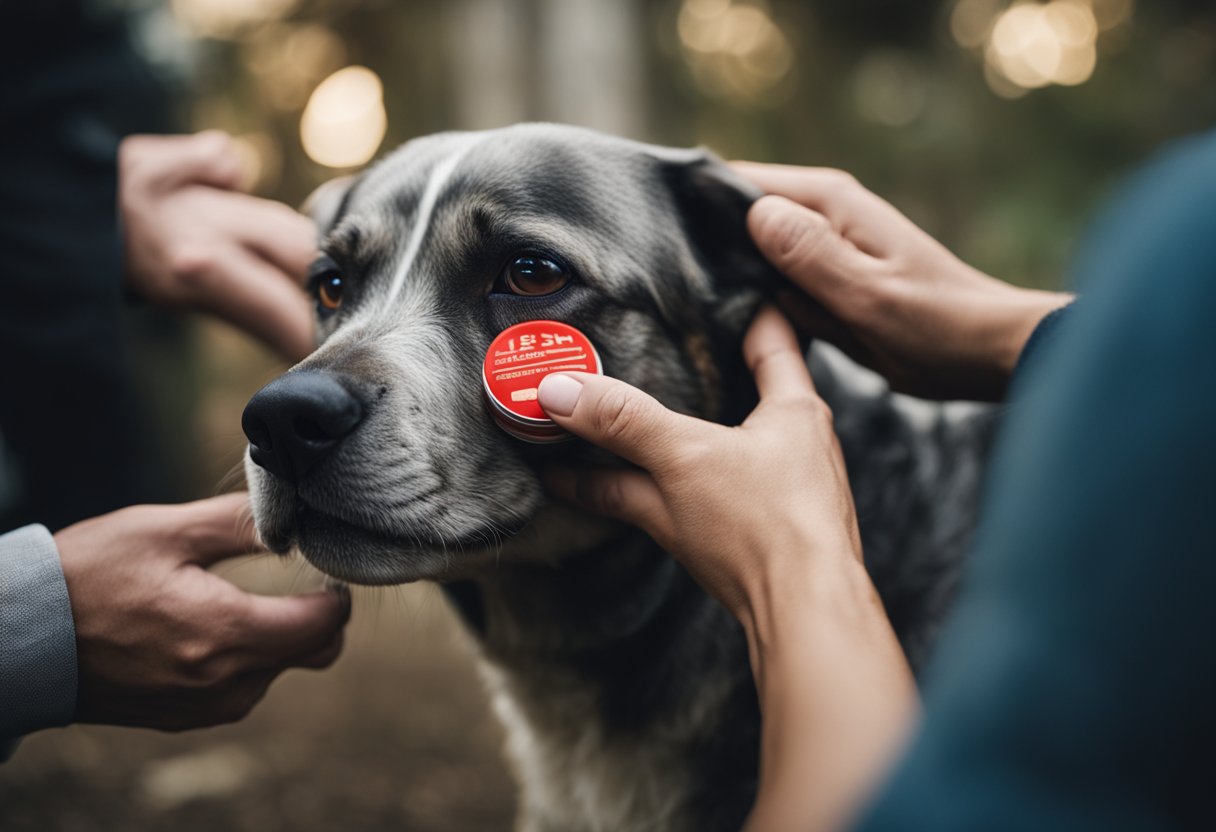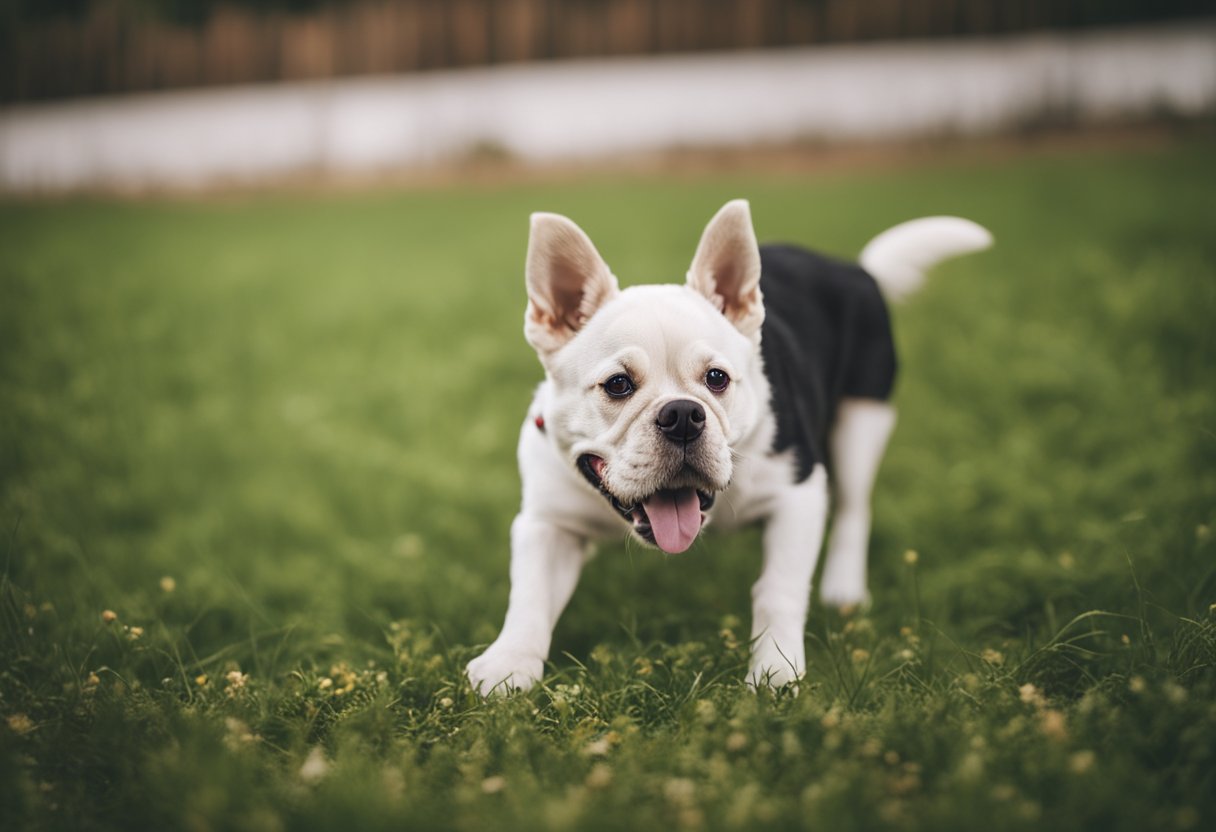Home Treatments for Moist Dermatitis in Dogs Hot Spots: A Comprehensive Guide
If you’re a dog owner, you know how frustrating it can be to watch your furry friend suffer from moist dermatitis, commonly known as hot spots. These red, inflamed, and itchy skin lesions can be caused by a variety of factors, including allergies, parasites, and poor grooming habits. While it’s always important to consult with your veterinarian if your dog is experiencing hot spots, there are also several home treatment strategies you can try to help ease their discomfort and promote healing.

Understanding Moist Dermatitis in Dogs is key to treating the condition effectively. Hot spots can be caused by a variety of factors, including fleas, ticks, and other parasites, as well as allergies, poor grooming habits, and underlying medical conditions. These skin lesions can be painful and itchy, and they can quickly spread if left untreated. While hot spots can be a frustrating condition to deal with, the good news is that there are several home treatment strategies that can help promote healing and reduce your dog’s discomfort.
Key Takeaways
- Moist dermatitis, or hot spots, are red, inflamed, and itchy skin lesions that can be caused by a variety of factors, including allergies, parasites, and poor grooming habits.
- Understanding the underlying cause of your dog’s hot spots is key to effective treatment.
- There are several home treatment strategies you can try to help ease your dog’s discomfort and promote healing, but it’s always important to consult with your veterinarian to ensure your dog receives the best possible care.
Understanding Moist Dermatitis in Dogs

If you have a furry friend, you may have heard of moist dermatitis, commonly known as hot spots. These are painful, itchy, and inflamed patches of skin that can appear anywhere on your dog’s body. In this section, we’ll discuss the causes, symptoms, and diagnosis of this condition.
Causes of Hot Spots
Hot spots can be caused by a variety of factors, including allergies, parasites, and poor grooming habits. Flea bites, ticks, and mites can all irritate your dog’s skin and lead to hot spots. Similarly, if your dog has a food allergy or is sensitive to environmental allergens like pollen or dust, they may develop hot spots as a result.
In addition, hot spots can be caused by excessive licking or scratching. If your dog is bored or anxious, they may start chewing or licking their skin, which can lead to hot spots. Dogs with long hair or thick coats are also more prone to hot spots, as their fur can trap moisture and bacteria against their skin.
Symptoms and Diagnosis
The symptoms of hot spots can vary depending on the severity of the condition. In mild cases, you may notice a small, red, and irritated patch of skin on your dog’s body. As the hot spot progresses, it may become more inflamed, swollen, and painful. Your dog may also scratch or lick the area excessively, which can make the hot spot worse.
If you suspect that your dog has a hot spot, it’s important to take them to the vet for a proper diagnosis. Your vet will examine the affected area and may take a skin scraping to check for bacterial or fungal infections. They may also perform allergy testing to determine if your dog has any underlying allergies that may be contributing to the hot spots.
In summary, hot spots are a common skin condition in dogs that can be caused by a variety of factors. If you notice any signs of hot spots on your dog’s skin, it’s important to seek veterinary care right away to prevent the condition from worsening.
Home Treatment Strategies

If your dog has been diagnosed with moist dermatitis, also known as hot spots, there are a few home treatment strategies you can try to help alleviate their discomfort and promote healing.
Initial Wound Care
Before treating the hot spot, it’s important to clean the affected area thoroughly. Use a gentle, pet-safe cleanser to remove any dirt, debris, or bacteria that may be present. You can also use a warm compress to help soothe the area and reduce inflammation.
Once the area is clean, it’s important to keep it dry to prevent further irritation. You can use a hair dryer on a cool setting to dry the area, or you can use a pet-safe drying spray.
Natural Remedies and Preventatives
There are several natural remedies and preventatives that can help treat and prevent hot spots in dogs. For example, coconut oil has antibacterial and anti-inflammatory properties, making it a great choice for treating hot spots. You can apply a small amount of coconut oil directly to the affected area to help soothe the skin and promote healing.
Another natural remedy is witch hazel, which has astringent and anti-inflammatory properties. You can apply witch hazel to the affected area using a cotton ball or soft cloth to help reduce inflammation and promote healing.
To prevent hot spots from occurring in the future, it’s important to keep your dog’s skin and coat clean and well-maintained. Regular grooming, including brushing and bathing, can help prevent matting, which can lead to hot spots.
When to Seek Veterinary Attention
While home treatment strategies can be effective in treating hot spots, there are some cases where veterinary attention may be necessary. If your dog’s hot spot is large, is not responding to home treatment, or is accompanied by other symptoms such as fever or lethargy, it’s important to seek veterinary attention right away. Your veterinarian may prescribe antibiotics or other medications to help treat the hot spot and prevent further complications.
Remember, with proper care and attention, most cases of hot spots can be effectively treated at home. If you’re unsure about how to treat your dog’s hot spot, or if you have any concerns about their health, don’t hesitate to contact your veterinarian for guidance.
Resources

When it comes to treating moist dermatitis, also known as hot spots, in dogs, there are a variety of home remedies that you can try. However, it is important to note that if your dog’s hot spot is severe or does not improve with home treatment, you should consult with a veterinarian.
Here are some resources that can help your home treatments for moist dermatitis in dogs hot spots :
1. Apple Cider Vinegar
Apple cider vinegar is a popular home remedy for hot spots in dogs. It has antibacterial and antifungal properties that can help to soothe and heal your dog’s skin. To use apple cider vinegar, mix equal parts water and apple cider vinegar in a spray bottle and apply it to your dog’s hot spot two to three times a day.
2. Coconut Oil
Coconut oil is another natural remedy that can help to treat hot spots in dogs. It has antibacterial and anti-inflammatory properties that can help to reduce inflammation and soothe your dog’s skin. To use coconut oil, apply a small amount directly to your dog’s hot spot and massage it in gently.
3. Witch Hazel
Witch hazel is a natural astringent that can help to dry out your dog’s hot spot and promote healing. To use witch hazel, apply it to your dog’s hot spot with a cotton ball two to three times a day.
4. Epsom Salt
Epsom salt is a natural remedy that can help to soothe your dog’s skin and reduce inflammation. To use epsom salt, mix two tablespoons of epsom salt with a cup of warm water and apply it to your dog’s hot spot with a clean cloth or cotton ball.
Remember, while these home remedies can be effective for treating mild cases of hot spots in dogs, it is important to consult with a veterinarian if your dog’s hot spot is severe or does not improve with home treatment.
Conclusion

As treatments for moist dermatitis in dogs hot spots Moist dermatitis, also known as hot spots, is a common skin condition in dogs. While it can be painful and uncomfortable for your furry friend, there are many home treatments that can help alleviate the symptoms and promote healing.
By keeping your dog’s skin clean and dry, and using natural remedies such as aloe vera gel or tea tree oil, you can help prevent hot spots from forming or worsening. Additionally, providing your dog with a healthy diet and plenty of exercise can boost their immune system and reduce the likelihood of skin issues.
Remember to always consult with your veterinarian before trying any new treatments, especially if your dog’s hot spots are severe or persistent. With proper care and attention, you can help your dog feel comfortable and healthy again.
Frequently Asked Questions

How can I safely treat my dog’s hot spots at home?
There are several safe and effective ways to treat your dog’s hot spots at home. First, you should trim the hair around the affected area to allow air to circulate and promote healing. Then, clean the area with a gentle, pet-safe cleanser, such as a diluted solution of chlorhexidine. Apply a topical antibiotic ointment or spray to the hot spot to prevent infection and promote healing. You can also use natural remedies like aloe vera or tea tree oil to soothe the skin and reduce inflammation.
What are the signs that a hot spot is healing on a dog?
As the hot spot begins to heal, you should notice a reduction in redness, swelling, and oozing. The skin should start to look less irritated and more dry. You may also notice that your dog is less itchy and scratching the area less frequently. However, it is important to continue treatment until the hot spot is completely healed to prevent recurrence.
Which over-the-counter ointments are safe for treating dog hot spots?
There are several over-the-counter ointments that are safe and effective for treating hot spots on dogs. Look for products that contain ingredients like benzoyl peroxide, hydrocortisone, or silver sulfadiazine, which can help reduce inflammation and prevent infection. However, it is always best to consult with your veterinarian before using any new products on your dog.
What home remedies can help dry up a dog’s hot spots?
There are several home treatments for moist dermatitis in dogs hot spots that can help dry up a dog and promote healing. One of the most effective ome treatments for moist dermatitis in dogs hot spots is to apply a mixture of equal parts apple cider vinegar and water to the affected area. You can also use aloe vera gel, witch hazel, or tea tree oil to soothe the skin and reduce inflammation. Additionally, feeding your dog a healthy diet that is high in omega-3 fatty acids can help improve skin health and reduce the risk of hot spots.
How can I prevent my dog from getting hot spots?
To prevent hot spots on your dog, it is important to keep their skin clean and dry, especially in areas where there is excess moisture or friction. Regular grooming and bathing can help remove dirt and bacteria from the skin and prevent matting of the hair. You should also ensure that your dog is getting enough exercise and mental stimulation to prevent boredom and anxiety, which can lead to excessive licking and scratching.
Are there any risks associated with home treatment of hot spots on dogs?
While home treatment of hot spots on dogs can be safe and effective, there are some risks to be aware of. If you use too much of a topical ointment or spray, it can cause skin irritation or even toxicity if ingested. Additionally, some natural remedies like tea tree oil can be toxic to dogs if ingested in large quantities. If your dog’s hot spot does not improve or seems to be getting worse, it is important to consult with your veterinarian.
